As we wrote early last month prior to knowing the outcome:
“Having been taken “down to the studs and masterfully redesigned,” with four (or five) bedrooms, three full bathrooms, an open chef’s kitchen and great room, and a penthouse media room with a wet bar and wrap around roof deck, the modernized single-family home at 864 Florida Street, “in the heart the Inner Mission,” sold for $3.1 million in March of 2015.
Since improved with custom enhancements and “now better than new,” the roughly 2,850-square-foot home returned to the market this past September, priced at $2.995 million with expectations for a bidding war.
Having failed to secure an acceptable offer, the list price for 864 Florida was raised to $3.08 million in October, to $3.15 million in November, and then removed from the MLS without a reported sale.”
And having returned to the MLS at the beginning of February with a $3.15 million price tag, and an official “1” day on the market according to all industry stats and reports, the sale of 864 Florida has now closed escrow with a contract price of $3.1 million, representing total appreciation of 0.0 percent since early 2015 on an apples-to-apples versus “median price” basis for the modernized single-family home.
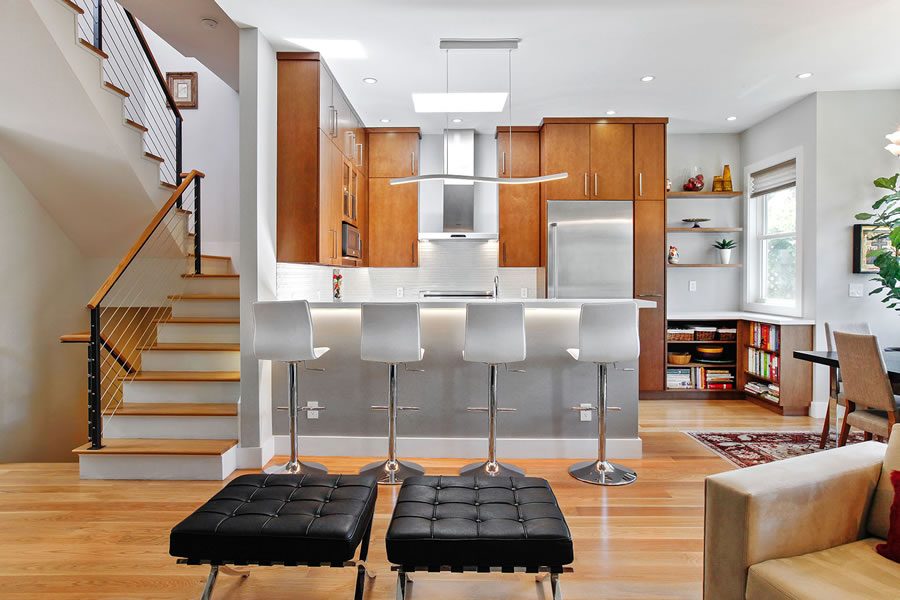
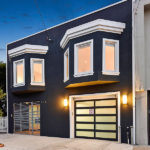
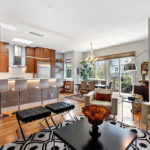
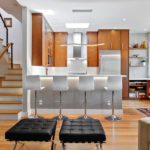



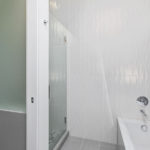
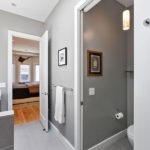

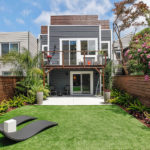


When the first bad condo apples started showing up, some speculated that they represented a pathology unique to SOMA condos or more generally just to condos. More likely is that condos lead changes in the market and where condos go SFRs follow.
What does that have to do with something trading for the same price as it did in March 2015?
Because before you start to have losses (beyond the $150,000 in commissions, transfer taxes, staging fees, etc.), the market has to cross a zero point.
Here you can see a seller with unrealistic expectations, thinking his 2.995 price would start a bidding war, and when he wasn’t getting acceptable offers, he raised the price.
I’m frankly surprised he walked away with the $175K+ loss before it got any worse. He was able to reset his expectations fairly rapidly, in spite of Case Schiller telling him he had made a mint.
Even though theoretically the price paid is irrelevant and all the seller should care about is getting the best current price, people have shown an irrational tendency to avoid dropping below the zero point as you put it.
But this individual reluctance is ultimately unsustainable. Because while you may want to hold out for your purchase price, what about the guy who bought 6 months before you?
i.e. A 2016 buyer may have wanted to hold out for 2016 pricing, but then some early 2015 buyer is happy to get out at his entry price. Thus setting comps at 2015 levels. Then a late 2014 buyer comes to market…
That being said, there was a long flat period at the top of the last cycle. Houses are not traded by hyper-fast computers running optimized trading algorithms. People generally enter the housing market infrequently, and are slow to acquire market knowledge, make decisions and make life changes based on those decisions.
What short circuits this process is that the market is so thin in San Francisco, I think primarily due to the city being 2/3 rental stock and the rest is Prop 13. A long held house is worth more to you than a new buyer who has their tax base reset. That means more choose to hang onto homes and convert them to rentals when they need to move, and others are dissuaded from selling entirely (they will also need to be buyers of the new place where they live, and that place will have higher property taxes).
All this creates a small pool of houses that are traded like magic the gathering cards while everyone else stays put. You don’t see the situation with other cities, where a buyer gets a small house in one part of town, then after kids they find maybe a bigger house in the same town. Here, starting a family or getting a divorce are trigger are much more likely to require exit from the entire state or at least the city.
This is clearly a trading card house, and for whatever it sells now, I expect it to be back on the market a few years from now.
And I could point to another recent apple with a positive result and make a broad point as anon2 did. So, no I don’t follow your take either.
In the Mission? If so, we’re all ears (especially if it’s a previously remodeled single-family home).
absolutely
Well at least it didn’t sell for “over asking” (your fave) and it didn’t drop in value.
As for signaling more, not really. I’ve said all along that the most noticeable market softening was in higher end condos (particularly in soma, but also some in the mission too.) in addition I said that prices softened for higher end homes, especially in the mish which didn’t have many $2.5+ mil home sales prior to this recent boom. Budget homes and condos under $1.2 haven’t really fallen much at all anywhere in the city. But let’s see what the 2018 rate hikes do…7 of ‘em would be narly!
“Budget homes and condos under $1.2 haven’t really fallen much”
Again though, if you look at the 2007 cycle, the low end overshot on the upside and then undershot on the downside. I’d expect the same this time around.
In 2007 we were in the worst economy in 70 years.
Now we are in a plateau, have been for a while.
Actually in 2007 we were at an economic peak, just as we may be now.
I’ve heard this type revisionism before; that prices only fell in the 2007-era because the economy collapsed. When in reality this has the causality backwards, the economy collapsed because housing prices fell (as did the expectations of future housing prices).
Your timeline is a bit off: in 2007 we wereat the height of prosperity – and no doubt there were many (on SS and elsewhere) saying it would only get better. it was 2008 that things went awry.
Good point. Things went awry in 2008.
That does not explain why things are about to go awry now.
The other significant thing to notice about the NBER link is their list of the length of economic expansion cycles from 1857-present. In all that time, there have only been two cycles longer than 100 months (106 & 120). From the last June 2009 trough, we are rapidly coming up to that 106 month mark. Making this expansion cycle quite long in the tooth.
Unless you are smoking what the endless summer crew are selling and believe that 161 years of economic history have just been prologue to an endless boom, you have to figure that we are due for a recession.
And if we are already seeing price throwbacks to 2015 at the plateau (or peak even!), what happens during the trough??
It is long in the tooth. But you need a reason for the economy to collapse. People on this very website have been predicting its impending collapse since at least 2014. Why were they wrong and what has changed to make these predictions acccurate?
(Now we may have a trade war or an actual war in Korea. That might be a recession by choice, but that’s different than the underlying strength of the economy.)
Anon2- I disagree on your low end analysis of 2007 vis-à-vis today. The low end in 2007 was more aspirational- D10 properties shooting up in value significantly with no “there” there. I avoided them like a hawk. Then 2008-10 some of those suckers fell 30-40%, ouch!
The budget $1.2 mil places I’m talking about today have there “there”! Now D10 is a different animal. Look at all the developments in Bayview, the shipyard, vis valley etc. and that price point still affords one modest condos and tics is the central parts of the city like the mission, Hayes valley, etc., etc.
And when we do have an eventual correction, I don’t think those $1.2 mil homes will fall further than the higher end. Opposite, they will hold values better. So I’d be casutious about comparing those to eras and their low end.
The Case-Shiller numbers are for the wider bay area, not just SF. So it’s unlikely that whatever may or may not have happened in D10 (or West Portal? for the poster below) is the reason for the low end overshooting. Additionally this overshoot of the low end occurred in other housing markets as well, so it’s cause is likely more broad then is found in a single neighborhood’s changes.
The low end in SF is different than other areas. And D10 is not a neighborhood, but a significant part of the city. My comments are accurate. I ‘now, I was here and lived it, saw the prices going up, down, than back up again. Case Schiller is too broad to ferret this out.
This doesn’t surprise me. As trendy as the Mission is, someone shopping for a home in the $3mm+ range can still find something in pretty much any neighborhood of the city. That block of Florida St is unremarkable, has no views, and is neither particularly tranquil nor right in the middle of the action. Asides from a nice remodel, there’s nothing justifying a price significantly above the neighborhood median price per sq foot.
Yes and no. It is just around the corner from 20th St corridor and easily walkable to pretty much everything. Live in the “middle of the action” and you are stuck with 24/7 insanity. If you want views you have to live in a high-rise or on a hill. Not everybody wants to deal with the realities of hills or elevators for every day living.
It’s half a block from Central Kitchen, Trick Dog, Sightglass and Atlas Cafe. One block from Flour + Water, Farmhouse Kitchen and Universal Cafe. Two blocks from Mission Cliffs, Heath and Tartine Manufactory. Within three blocks of a number of corporate and high tech offices. And walking distance to both Safeway and Gus’s Community Market.
So the above 2 replies comment on how central the location is to all sorts of goodies.
My comment is on tranquil it is. Florida and Alabama are great blocks in the mish. Very quiet as they are between busier streets like Harrison and Bryant. Heck in the middle of the day you can sit in your yard and you don’t hear jack. Very liveable long term imo.
agreed, the minor streets in the Mission (I’d add Shotwell, Treat, York, and Hampshire) all have some wonderful blocks and no traffic (except for stupid lift/uber drivers who don’t understand that they are miserable through streets….).
You’re all kind of making my point… it’s not a remarkable block for the Mission. Some people might want more or less action, quiet, whatever… that means this is just average. Houses of this size are currently selling for an average of $918/sq-ft in the Mission, per Paragon. If this house were in average condition, you’d expect a sale price around $2.6mm. Since it’s in exceptional shape, they got a bit over $3mm. Fair price for the market, they just overpaid in 2015.
It’s an above average house, with above average finishes and in an above average location for the Mission.
Regardless, the same house in the same location just sold for the same price it fetched in early 2015 (which is a significantly stronger outcome than for another above average home a few blocks away).
It’s crazy how many buyers now seem to have “just overpaid” in 2015, including those who were right in the middle of the action.
I believe that SFHs in SF will appreciate slowly over the coming 5 – 10 years (that’s why I shifted my investment rentals out of the area/state to high growth markets) There surely will be some SFHs that show a loss – that is happening somewhat now. The tax situation and interest rates are headwinds to SFHs and a damper on appreciation.These changes will impact the middle and upper segment. Affordability is so poor here that many well paid professional can just barely afford a modest home now. Rate increases will change that. Condos will be hardest hit. Losses will grow or appreciation will slow even more if Costa is repealed. A friend is selling her Sacramento rental properties in anticipation of some form of rent control being placed on SFHs in the Sacramento area. That would apply to SF and the Bay Area and the SOCAL coast also.
And the San Andreas Fault will go wild, Climate Change and eternal drought will transform San Francisco into a coastal Las Vegas (or maybe Fresno), and rampaging gangs of dusky skinned, un-heartlandishly hued terrorists will camp in every block.
(Just thought since we were engaged in the Hee Haw Doom Despair and Agony on Me song I would add a few other possibilities!)
for people waiting on the sidelines, they still found a buyer to pay more. The buyer surely has a higher interest rate and less of a tax deduction. And in the entry level housing market, say around West Portal, I see prices selling well above $1k per sq foot. A lot of bids and huge overbids. The pool of young buyers who want to stay in SF keeps growing and growing with all of these expensive SOMA rentals. Just like my situation, when you get married and have kids you will have a tough time in a tiny 1,150 sq foot glass box with no yard. This is probably why these SFH in good neighborhoods are getting bid up, and prices are much higher than 2015 in this space